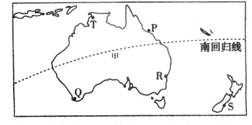Last year, two days after Christmas, we kicked China out of the house. Not the country obviously, but bits of plastic, metal, and wood with the words “Made in China”. We kept what we already had, but stopped bringing any more in. because it had coated our lives with toys, and useless stuff. Sometimes I worried about jobs sent overseas, but price triumphed over virtue at our house. We couldn’t resist what China was selling.
But on that dark Monday last year, an unease feeling washed over me as I sat on the sofa. It wasn’t until then that I noticed a fact: China was taking over the place.
It stared back at me from the empty screen of the television. I spied it in the pile of tennis shoes by the door. It glowed in the lights on the Christmas tree and watched me in the eyes of a doll lying on the floor, I slipped off the couch and sorted gifts into two piles: China and non-China. The count came to China, 25, the world, 14. Christmas, I realized, had become a holiday made by the Chinese. Suddenly I wanted China out.
I persuaded my husband, and on Jan. 1 st, we started a-year-long household embargo on Chinese imports. The idea wasn’t to punish China. And we didn’t fool ourselves into thinking because we wanted to measure how far it had pushed in. We wanted to know what it would take in time, money, and worry to kick our China habit!
In the spring, our 4-year-old son started a campaign to support “China things”. “It’s too long without China,” he cried. He kept at me all day. I have discovered for myself that China doesn’t control every aspect of our daily lives, but if you take a close look at the underside of boxes in the toy department, I promise it will give you pause. “When we can buy China things again? Let’s never stop.” My son said.
After a year without China I can tell you this: You can still live without it, but it’s getting costlier by the day. And a decade from now I may not be brave enough to try it again.
小题1: The best title for the text could be _______.
A.China Free Living: A Trouble One
B.A Year without “Made in China”
C.Why I Choose “Made in China”
D.“Made in China”: Good or Bad小题2: According to the passage, why did the author stop bringing in things “Made in China”?
A.Because she wanted to bring back job opportunities for her natives.
B.Because she has a strong sense of nationalism against “Made in China”.
C.Because she wanted to learn what life would be like without “Made in China”.
D.Because too much stuff made in China was take over her house.小题3: The Underlined word “embargo” in the forth paragraph means ________.
A.reaction
B.ban
C.restriction
D.cancellation小题4:The writer’s purpose in writing this passage is ________.
A.to tell the readers an interesting experience
B.to describe the trouble facing a housewife
C.to explain the importance of Chinese goods
D.to show the difficulty without Chinese goods

